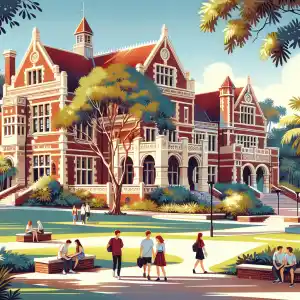Junior Secondary Studies of Education

Introduction to Junior Secondary Studies
Junior Secondary Studies in the Australian Education System cater to students in grades 7 to 10, offering a diverse and comprehensive curriculum. These years are crucial as they bridge the gap between primary education and senior secondary years, laying the groundwork for specialized higher education and future career paths.
Curriculum and Learning Outcomes
The Junior Secondary curriculum is expansive, covering core academic subjects and elective options. Students typically study:
- English: Developing advanced literacy skills, critical reading, and expressive writing.
- Mathematics: Enhancing problem-solving skills, understanding algebra, geometry, statistics, and more.
- Science: Diving deeper into biology, chemistry, physics, and earth sciences.
- Humanities: Exploring history, geography, economics, and civics.
- The Arts: Encouraging creative expression through visual arts, music, drama, and dance.
- Languages: Offering a range of languages other than English, promoting linguistic skills and cultural awareness.
- Technology and Design: Integrating digital literacy, design principles, and innovative problem-solving.
- Health and Physical Education: Fostering physical health, well-being, and teamwork.
This period also emphasizes personal development, critical thinking, and independent learning, preparing students for the rigors of senior secondary education.
State and Territory Specifics and International Fees
Each Australian state and territory has distinct guidelines and curricula, though all align with the national educational standards. Here's a brief overview of the fee structures across states and territories for international students in both government and private schools:
-
New South Wales (NSW)
- Government Schools: Approximately AUD 11,000 to AUD 15,000 per year.
- Private Schools: Generally from AUD 20,000 to over AUD 35,000 per year.
-
Victoria (VIC)
- Government Schools: Around AUD 10,500 to AUD 14,000 per year.
- Private Schools: Typically from AUD 20,000 to over AUD 35,000 per year.
-
Queensland (QLD)
- Government Schools: About AUD 10,000 to AUD 14,500 per year.
- Private Schools: Usually starting from AUD 20,000, going much higher based on the institution.
-
Western Australia (WA)
- Government Schools: Approximately AUD 9,000 to AUD 13,000 per year.
- Private Schools: Ranging from AUD 20,000 to over AUD 35,000 per year.
-
South Australia (SA)
- Government Schools: Around AUD 10,000 to AUD 14,000 per year.
- Private Schools: Generally from AUD 20,000 to over AUD 35,000 per year.
-
Tasmania (TAS)
- Government Schools: About AUD 9,000 to AUD 13,000 per year.
- Private Schools: Typically starting from AUD 20,000 upwards.
-
Australian Capital Territory (ACT)
- Government Schools: Approximately AUD 10,500 to AUD 15,000 per year.
- Private Schools: Usually from AUD 20,000 to over AUD 35,000 per year.
-
Northern Territory (NT)
- Government Schools: Around AUD 10,000 to AUD 14,000 per year.
- Private Schools: Starting from AUD 20,000 and can vary significantly.
Educational Institutions and Centers
Australia offers a wide array of public and private institutions for Junior Secondary Studies, each with unique strengths and focuses. Public schools provide accessible education under government funding, emphasizing inclusivity and a broad curriculum. Private schools, while charging tuition, may offer more specialized programs, smaller class sizes, and additional resources.
Tuition Fees and Financial Aid
Tuition fees for Junior Secondary Studies vary widely between public and private institutions and whether the student is domestic or international. Public schools offer lower or nominal fees for Australian residents and specific visa categories, while private schools charge higher fees, offering various programs and facilities. Both sectors provide financial aid and scholarship options to eligible students.
Conclusion: The Importance of Junior Secondary Studies
Junior Secondary Studies in Australia serve as a critical transitional phase in education, equipping students with necessary skills and knowledge for senior years and beyond. With a focus on academic excellence, personal growth, and adaptability, these years are vital in shaping student trajectories. Understanding the nuances of the curriculum, fee structures, and educational options across different states and territories helps families and students make informed decisions for a prosperous educational journey.











